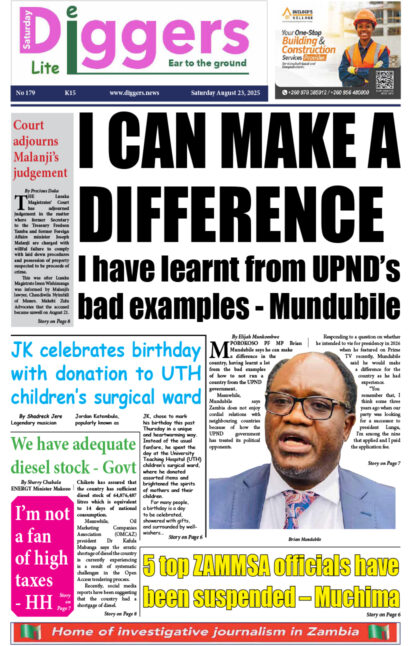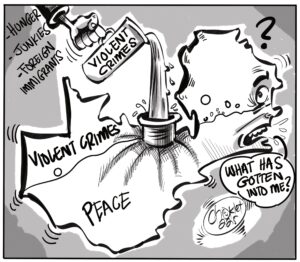In the 2025 national budget, the Constituency Development Fund (CDF) allocation has been increased to K36.1 million per constituency, up from K30.6 million in 2024. The increase somewhat reflects a sustained effort to decentralise resources and empower local communities to address their unique development challenges. CDF has often been regarded as a key driver of local development. However, despite the increased allocations, a pertinent question remains: Is CDF truly the “Game Changer” it is intended to be, or are there underlying challenges that need to be addressed to unlock its full potential? In this piece, we explore the key implementation challenges and highlight the opportunities that could enhance CDF’s effectiveness in fostering meaningful development.
According to the Zambia Statistical Agency, around 60 percent of Zambians live below the poverty line, with rural areas disproportionately affected. The rural economy is heavily reliant on subsistence farming, which is vulnerable to climate change, poor infrastructure, and limited access to both markets and credit. Unemployment also remains high, particularly among youth and women, who continue to struggle to find sustainable livelihoods.
The CDF is designed to address these local development challenges by decentralising funds to constituencies, allowing them to prioritise and manage projects that directly respond to community needs. According to the CDF Guidelines, the fund is divided into three main components: community projects, which receive 60 percent of the allocation; youth and women empowerment, accounting for 20 percent; and secondary school (boarding) and skills development bursaries, also set at 20 percent. While the objectives are well-intended, challenges in using the CDF effectively have been well-documented.
A 2024 report by the Centre for Trade Policy and Development (CTPD) highlights several hurdles in CDF implementation, particularly in rural areas. These include delays in project completion due to limited capacity among local contractors, bureaucratic inefficiencies, and logistical challenges such as poor road networks. In many cases, rural areas have struggled with lower utilisation rates of the funds allocated compared to urban districts, leading to a gap in the impact of CDF. Other challenges include the misuse of grants, low loan repayment rates, and disparities in bursary access between rural and urban constituencies. Political interference in project selection has further complicated the effectiveness of CDF initiatives, often aligning projects with political interests rather than community needs.
Despite these challenges, CDF retains the potential to drive change. The fund, if properly managed and implemented, can drive local development and support poverty reduction efforts, particularly in underserved areas. The empowerment component of CDF, for example, has the potential to foster small business growth, especially for women and youth. Similarly, bursary programme provides critical support to students from disadvantaged backgrounds, increasing their access to secondary school and vocational training.
To fully realise the potential of the CDF, several improvements are necessary. Strengthened oversight mechanisms, enhanced capacity for local contractors, timely disbursement of funds from the central government to local authorities, and simplified approval processes for projects are essential in addressing project implementation delays. Additionally, the government should allocate a portion of CDF funds toward mandatory training in financial literacy and project management for all prospective CDF beneficiaries before any funds are disbursed. This will ensure that recipients are better prepared to manage their finances and projects effectively, reducing the risk of misappropriation of funds.
In addition to financial literacy training, there is a need to standardise monitoring and evaluation tools across districts to provide a more consistent approach to assessing the performance of CDF projects. The government should also consider introducing incentives for beneficiaries—both grant and loan recipients—who demonstrate responsible use of funds and achieve measurable growth in their projects or businesses. These incentives could include access to additional grants or preferential loans for business expansion. Finally, reducing political interference in project selection is crucial to ensuring that funds are directed toward genuine community needs rather than political agendas.
In conclusion, the increased CDF allocations in the 2025 budget present a unique opportunity to drive local development, but only if the implementation challenges are addressed. The additional funding alone will not lead to transformative change unless the systemic barriers are effectively dealt with. With right measures and political will, CDF can play a more meaningful role in reducing poverty, tackling unemployment, and improving livelihoods, particularly in rural areas where the need is greatest.
About the authors
Elijah Mumba is a development economist and public finance expert, currently serving as the Lead Researcher for Public Finance Management at the Centre for Trade Policy and Development. He holds a master’s degree in development economics from the University of Cape Town.
Barnabas K. Mwale is currently serving as a Trade and Investment Assistant Researcher at the Centre for Trade Policy and Development. He holds a bachelor’s degree in economics and finance from the University of Lusaka.
























